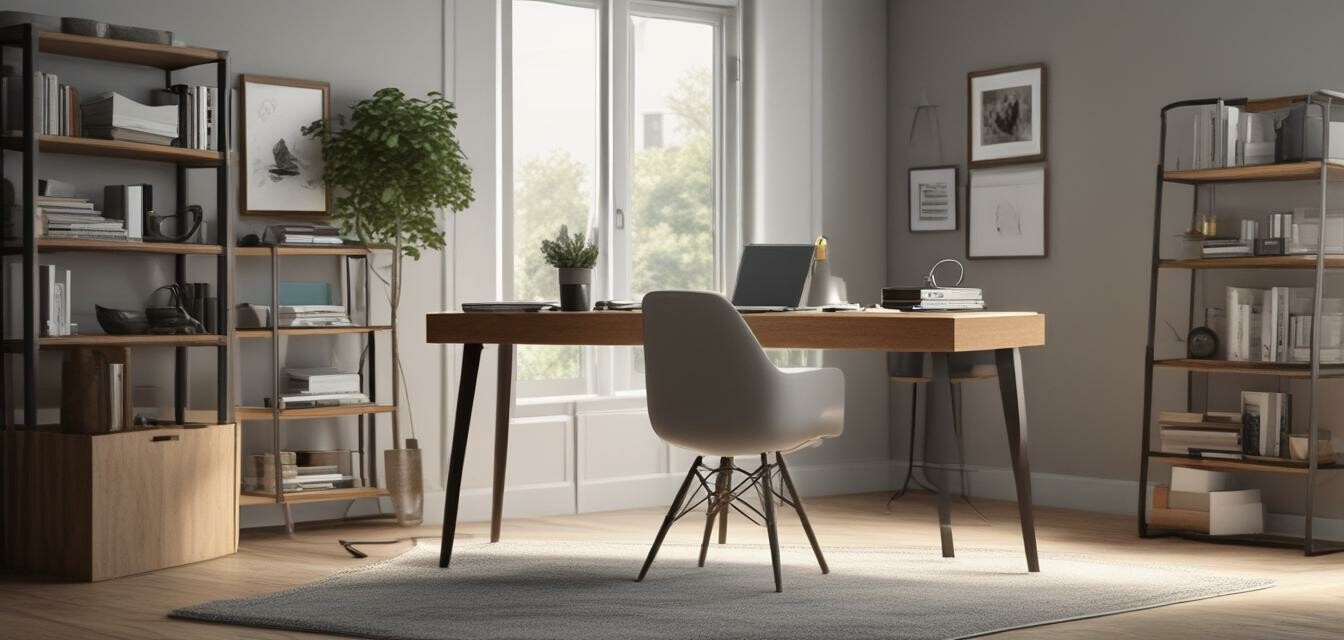
The Art of Minimalism in Home Office Design
Key Takeaways
- Minimalism focuses on decluttering and simplicity for a peaceful workspace.
- Choosing the right furniture plays a critical role in achieving a minimalist look.
- Color schemes should be kept neutral to enhance calmness and focus.
- Personalization can be achieved through minimal decorative elements.
- Functionality is essential; ensure your workspace is both efficient and aesthetic.
The adoption of minimalism in home office design can transform your workspace into a sanctuary of productivity and calm. By decluttering and selecting the right furniture, you create an environment that enhances focus and creativity. In this article, we’ll explore practical approaches to integrating minimalist principles in your home office, ensuring both functionality and aesthetics meet your needs.
Understanding Minimalism
Minimalism is not just a style; it’s a lifestyle choice that emphasizes simplicity in all aspects of life, including workspace design. The goal is to remove distractions and create a tranquil environment that promotes well-being and productivity. Here are some key principles of minimalism that you can apply to your home office:
- Less is more: Reduce the number of items in your workspace.
- Functional furniture: Choose pieces that serve multiple purposes.
- Neutral color palette: Opt for whites, grays, and earth tones.
- Smart storage solutions: Incorporate hidden storage to maintain a tidy space.
Benefits of a Minimalist Home Office
Adopting a minimalist approach to home office design offers numerous benefits:
- Enhanced focus and concentration due to fewer distractions.
- Increased space efficiency, making smaller areas feel larger.
- Improved mental clarity, as a clutter-free space promotes clearer thinking.
- A timeless aesthetic that won’t go out of style.
Decluttering Your Space
Before setting up your minimalist home office, start with decluttering. Here’s how to effectively declutter:
- Remove everything from your desk and office space.
- Sort items into categories: keep, donate, or discard.
- Keep only essential items that support your work.
- Organize remaining items using storage boxes or drawers.
Tips for Maintaining a Clutter-free Workspace
Once you’ve decluttered, maintaining a minimalist office becomes crucial. Here are some tips:
- Set a routine for organizing your workspace at the end of each day.
- Limit the number of items on your desk.
- Utilize cloud storage to reduce physical documents.
- Adopt a "one in, one out" policy to prevent accumulation.
Selecting the Right Furniture
Choosing furniture that aligns with minimalist design principles is essential. Consider the following features when selecting pieces:
| Furniture Type | Ideal Features | Why Minimize? |
|---|---|---|
| Desk | Sleek, unobtrusive, multi-functional | Provides a clean working surface. |
| Chair | Ergonomic design, simple style | Comfort helps maintain productivity. |
| Shelves | Wall-mounted, minimalist design | Reduces floor clutter and keeps essentials at hand. |
Explore more about office desks that can help you create an effective minimalist environment.
The Role of Color in Minimalist Design
Color plays a significant role in setting the mood of your workspace. Minimalist designs often prioritize:
- Neutral colors like white, beige, and gray.
- Accent colors used sparingly for inspiration.
- Textures and natural materials to add warmth without clutter.
To learn more about color schemes, check our Tips and Inspiration section!
Personalizing Your Minimalist Office
While minimalism encourages simplicity, personal touches are essential for creating a comfortable and inviting office space. Here are a few ways to incorporate your personality:
- Select a few decorative accessories that inspire you.
- Include plants for a touch of nature.
- Use artwork that resonates with you, keeping it limited to avoid clutter.
Pros
- Cleaner aesthetic leads to a more peaceful working environment.
- Enhances focus by reducing distractions.
- Easier to keep the office organized and tidy.
Cons
- May require a significant initial effort to declutter.
- Some may find it too stark or bare without sufficient personal touches.
- Requires consistent effort to maintain a minimalist philosophy.
Conclusion
In conclusion, adopting a minimalist approach in home office design can create a productive, serene, and inspiring workspace. Emphasizing decluttering, choosing the right furniture, and implementing a cohesive color scheme are all paramount to achieving this style. Personalize your environment with thoughtful decor, and you will find that minimalism can greatly enhance your work-life balance and creativity.
For more tips on designing your home office, check out our Buying Guides and Decorative Accessories categories!